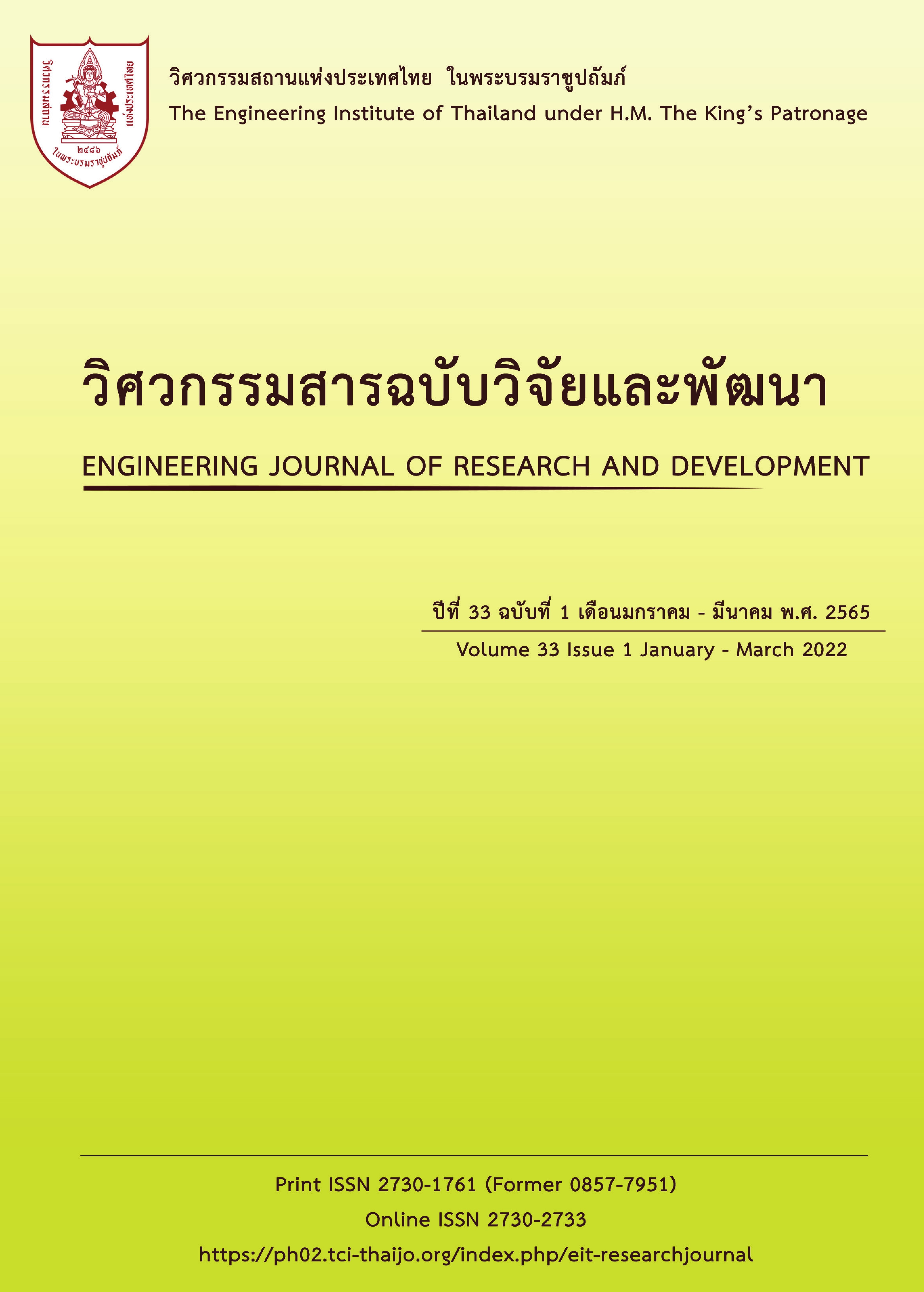UTILIZATION OF GEOPOLYMER ON IMPROVEMENT OF LOESS SOIL USING PALM OIL FUEL ASH AND GRANULATED BLAST FURNACE SLAG
Main Article Content
Abstract
This research was aimed to improve the loess soil for base course using palm oil fuel ash and granulated blast furnace slag – based geopolymer and compared to the conventional soil cement. The unconfined compression test and wet-dry durability test were performed in laboratory. The ratio cement is 5, 7, 9, and 11 percent by mass with the room temperature curing for 2, 7, and 28 days. Soil geopolymer used palm oil fuel ash of 5 and 10 percent by mass and 5 percent of palm oil fuel ash mixed with 3 percent granulated blast furnace slag by mass. The concentration of sodium hydroxide solution of 10 molars with the ratio of sodium silicate and sodium hydroxide of 1:3 was used as alkali base. The determined curing phase was 2, 7, and 28 days, controlling temperature at 70, 90, and 110 degrees of Celsius at the first day. The results shown that the soil geopolymer using palm oil fuel ash mix granulated blast furnace slag 5 with 3 percent by mass provided higher strength than using palm oil fuel ash 5 percent by mass about 2.8 percent at 70 degrees of Celsius at curing 28 days, and by exhibited higher strength than soil cement used 5 percent about 11.7 percent. In the term of percent weight loss on durability test, geopolymer using palm oil fuel ash with granulated blast furnace slag provided just littlebit more than using palm oil fuel ash as 0.3 percent and less than soil cement used 5 percent is 3.1 percent.
Article Details

This work is licensed under a Creative Commons Attribution-NonCommercial-NoDerivatives 4.0 International License.
The published articles are copyright of the Engineering Journal of Research and Development, The Engineering Institute of Thailand Under H.M. The King's Patronage (EIT).
References
กรมทางหลวง. มาตรฐานที่ ทล.-ม. 204/2556. มาตรฐานพื้นทางดินซีเมนต์ (Soil cement Base). สำนักวิเคราะห์
และตรวจสอบกรมทางหลวง กระทรวงคมนาคม, 2556.
ธีระชาติ รื่นไกรฤกษ์, สุเชษฐ์ เอี่ยมเชย. ความคงทนของดินซีเมนต์. รายงานฉบับที่ วว. 120 กองวิเคราะห์และวิจัยกรมทางหลวง, 2532.
พัชราภรณ์ ธรรมบำรุง. การศึกษาคุณสมบัติของจีโอพอลิเมอร์ที่เตรียมจากดินขาว เถ้าปาล์ม และของเสีย กากขี้แป้ง. คณะวิศวกรรมศาสตร์ มหาวิทยาลัยสงขลานครินทร์, 2558.
อุบลลักษณ์ รัตนศักดิ์. วัสดุจีโอโพลิเมอร์. กรุงเทพฯ : สมาคมคอนกรีตแห่งประเทศไทย, 2560.
Salih, M. A., Farzadnia, N., Abang Ali, A. A., and Demirboga, R. Effect of different curing temperatures on alkali activated palm oil fuel ash paste. Construction and Building Materials, 2015, 94, pp.116–125.
Kubba, Z. et al. Impact of Curing Temperatures and Alkaline Activators on Compressive Strength and Porosity of Ternary Blended Geopolymer Mortars. Case Studies in Construction Materials, 2018, 9, e00205.
Ameri, F., Parham, S., Seyed, A.Z., and Babak, B.Geopolymers vs. Alkali-Activated Materials (AAMs):A Comparative Study on Durability, Microstructure, and Resistance to Elevated Temperatures of Lightweight Mortars.Construction and Building Materials, 2019, 222 (20), pp.49–63.
American Society for Testing and Materials.ASTM Standard D559 Wetting and Drying Compacted Soil-Cement Mixtures. ASTM International, West Conshohocken, PA, 2003.
American Society for Testing and Materials.ASTM C 618-03 Standard Specification for Coal Fly Ash and Raw Calcined Natural Pozzolan for use Mineral Admixture in Portland Cement Concrete. [n.p.]: Annual Book of ASTM Standard, 1997.


